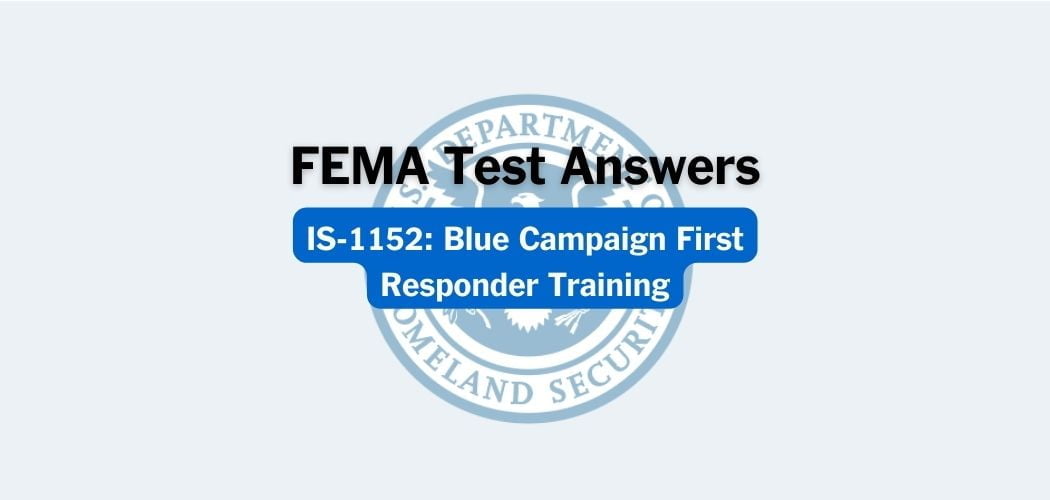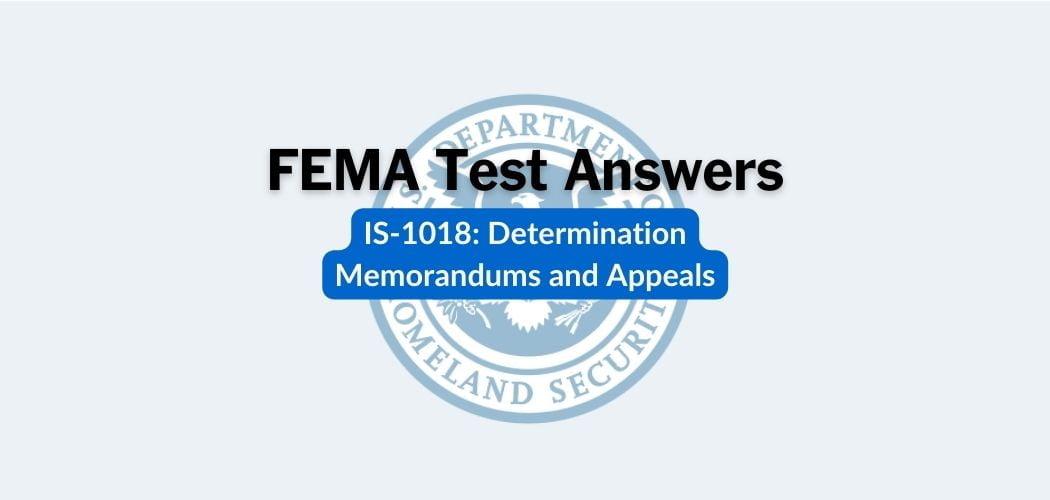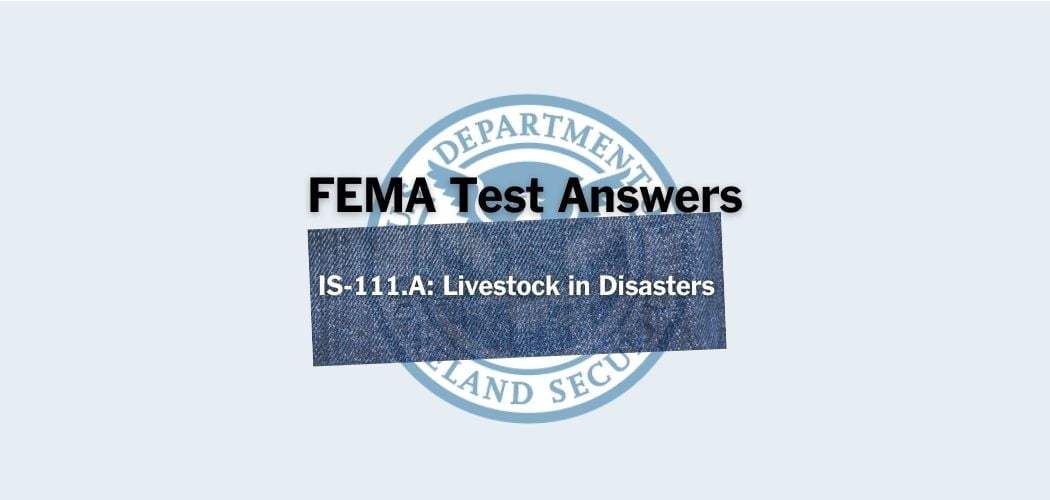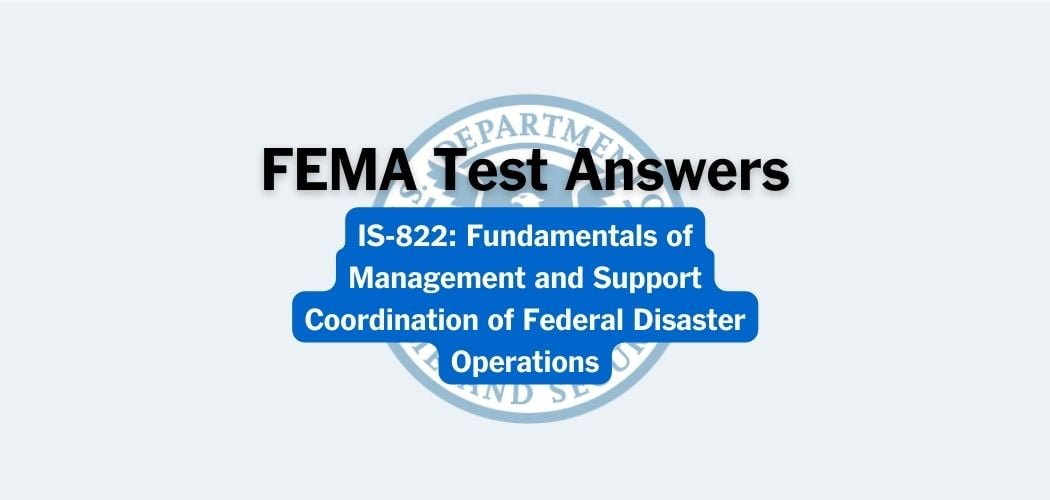Overview: The FEMA IS-1190 course was published on 12/16/2020 to educate stakeholders and a larger audience on planning for and responding to environmental incidents, and to highlight how the NCP/NRS and the NRF/Stafford Act align.
Prerequisite: It’s highly recommended to take the IS-230 Fundamentals of Emergency Management prior to taking this course.
FEMA IS-1190 test answers
Each time this test is loaded, you will receive a unique set of questions and answers. The test questions are scrambled to protect the integrity of the exam.
Question 1. Which of the following is not a defense for a responsible party?
A. Act of God
B. Act of War
C. Act or omission of a third party
D. It was an accident✅
Question 2. Which agency/agencies co-chair Regional Response Teams (RRTs)?
A. RRTs are always co-chaired by EPA.✅
B. RRTs are co-chaired by EPA and USCG year-round. During a response, the agency providing the Federal On-Scene Coordinator chairs the convening RRT.
C. The 15 federal agencies that comprise the RRTs rotate responsibility for co-chairing RRTs.
D. RRTs are always co-chaired by USCG.
Question 3. Which of these statements about the relationship between the NRT and RRTs are true? Select all that apply.
A. The NRT only provides guidelines for RRT action during a response and does not provide additional on-scene assistance.
B. The NRT provides its assistance to the regional and on-scene components of the NRS, including RRTs.✅
C. The RRTs provide their assistance to the national on-scene components of the NRT.
Question 4. The Natural Resource Damage Assessment (NRDA) designates which type of team to calculate damages after an incident?
A. Regional Response Team
B. NDRA Response Team
C. Natural Resource Trustees✅
D. Board of Trustees
Question 5. Which of these statements about the role of the “responsible party” (RP) after a spill is FALSE?
A. The RP is responsible for cleaning up of the spill, paying for the response, paying for certain damages as a result of the spill, and environmental restoration following the response.
B. The RP commonly works cooperatively with the FOSC as a response partner to provide an integrated joint response effort.
C. Once the RP has initiated the incident response and the FOSC arrives on scene, the RP is barred from any further involvement in the response and environmental restoration.
D. If the RP cannot be identified or is not capable of conducting an adequate response to a spill, a federal response may be needed.✅
Question 6. Fill in the blank: ______ give(s) the Federal Government enforcement authorities over the parties responsible for spills and require polluters to pay for the cleanup.
A. The Clean Water Act (CWA)/Oil Pollution Act (OPA)
B. Comprehensive Environmental Response, Compensation, and Liability Act (CERCLA)
C. Both the CWA/OPA and CERCLA✅
D. Neither the CWA/OPA nor CERCLA
Question 7. Which of these statements about the Incident Command System (ICS) is TRUE?
A. The ICS is uniquely developed to address pollution response and is not used in any other emergency response.
B. All NRT agencies have personnel trained and certified to plug into the ICS structure as needed during a response.✅
C. The National Incident Management System (NIMS) and ICS do not apply to oil and hazardous substance responses.
D. The ICS is highly specialized for federal-level response and cannot be applied to incidents at the local or state levels.
Question 8. Which type of plan is developed by Area Committees led by Federal On-Scene Coordinators and has areas of responsibility that may include several local planning districts and/or parts of such districts?
A. Regional Contingency Plan
B. Area Contingency Plans✅
C. National Contingency Plan
D. Industry Contingency Plan
Question 9. How are preparedness efforts validated within the National Response System?
A. Through the annual assessments of the contingency plans✅
B. Through the Preparedness for Response Exercise Program
C. Via the National Response Center incident reports
D. By a review of the USCG Commandant
Question 10. What is the mission of the National Response Team (NRT)?
A. To provide technical assistance, resources, and coordination for emergencies involving hazardous substances, pollutants/contaminants, hazmat, oil, and weapons of mass destruction.✅
B. To lobby state and federal lawmakers to prioritize policy supporting national-level emergency response.
C. To deploy to the field during emergencies involving hazardous substances, pollutants/contaminants, hazmat, oil, and weapons of mass destruction.
Question 11. An explosion at an oil refinery on Lake Michigan results in a large fire and an oil spill that affects both inland and coastal resources. Which statement about this incident is true?
A. This incident falls under the purview of the NCP and NRS.✅
B. This incident does not fall under the purview of the NCP or the NRS.
C. There is not enough information provided to determine whether this incident falls under the purview of the NCP and NRS.
Question 12. The Natural and Cultural Resources Recovery Support Function:
A. Provides an additional avenue for environmental incident recovery under the National Preparedness System.
B. Has nothing to do with the NCP or oil/hazardous substance incidents.
C. Only pertains to those responses that are inland.
D. Is specific to State and Tribal governments that need assistance with damage assessments after an incident.✅
Question 13. Which of these statements is correct?
A. The CWA/OPA addresses authorities with regard to hazardous substances, excluding oil, while CERCLA addresses authorities with regard to oil.
B. The CWA/OPA addresses authorities with regard to oil, while CERCLA addresses authorities with regard to hazardous substances, excluding oil.
C. The CWA/OPA gives the federal government enforcement authority over the responsible party for oil spills and requires polluters to pay for cleanup, while CERCLA does not give the federal government any enforcement authority for hazardous material responses.✅
Question 14. Under the NCP, who can make a request for federal assistance?
A. Only the responsible party
B. Only a State/Territory Governor or Chief Executive of the Tribe
C. Only the lead federal agency (either the USCG or EPA)
D. State, tribal, and/or local official✅
Question 15. Which of these statements about Regional Response Teams (RRTs) is FALSE?
A. Members of RRTs reach back into their organizations to deploy and make available resources needed by FOSCs during an incident response.
B. RRTs provide technical advice and recommendations to FOSCs.
C. RRTs are the first responders dispatched into the field by the local 911 operator when an oil discharge or hazardous material release occurs.✅
D. Some individual RRT members may deploy to an incident site as resources from their agencies.



